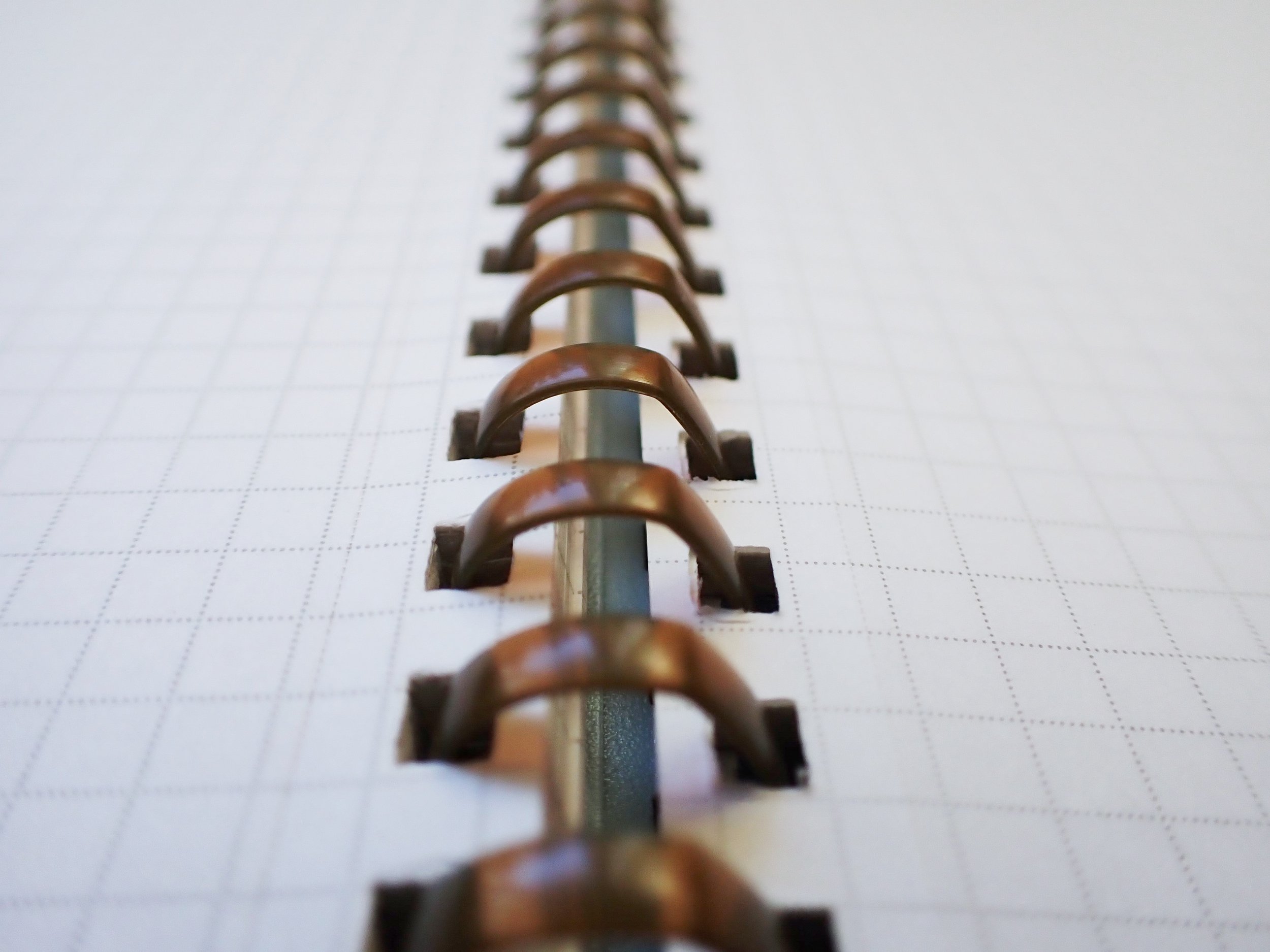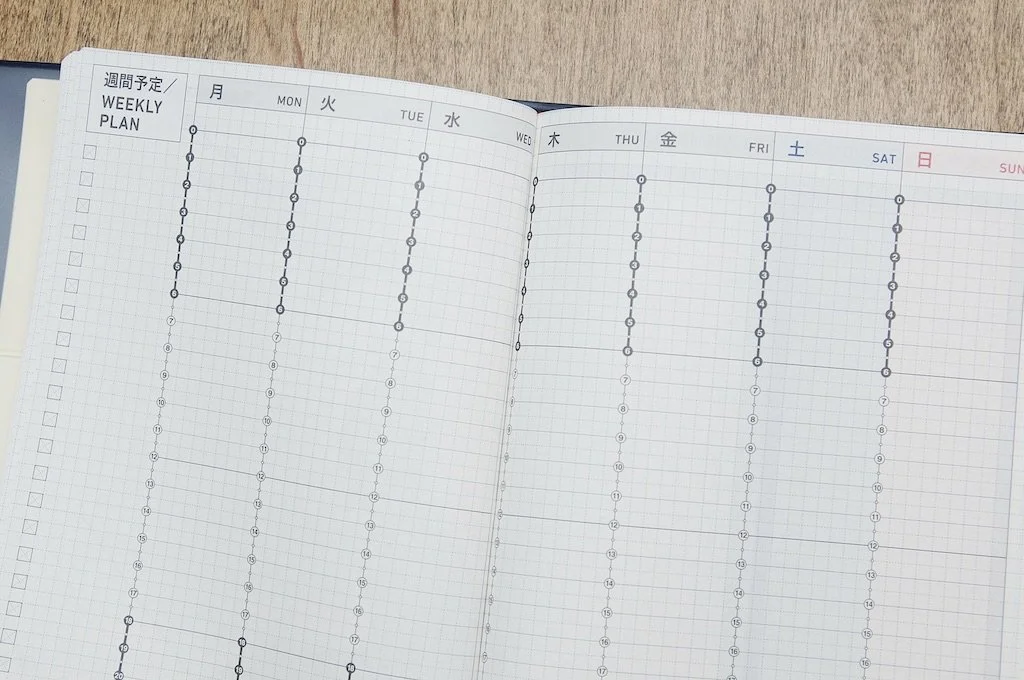(Sarah Read is an author, editor, yarn artist, and pen/paper/ink addict. You can find more about her at her website and on Twitter. And check out her latest book, Out of Water, now available where books are sold!)
Yes, Sooofa, with three Os. It's fitting, as this is definitely an "oooh" notebook. Kokuyo makes some of the best notebooks, and the Sooofa Soft Ring Notebook might be my favorite of theirs to date.
It's slightly wider than A5, and also comes in a slightly wide B6, in a handful of calm colors. The cover is matte plastic with minimal branding, a wee notch cutout for your pen clip, and an elastic band closure. Inside the back cover is a clear plastic folder-style pocket. The cover is durable and cleanable, so it's up to any kind of adventure, from camping to math class.
The paper is Kokuyo's Campus paper, which is some of the best out there for whatever writing tool you like, from pencils to fountain pens, and it handles it all with ease, so you can use both sides of each of these 80 sheets. The paper has a faint 4mm grid, so it works for those who like grid or lined, but it's also faint enough that it can be ignored altogether as if the page was blank. The grid is a bit small for me to write on every line, but every-other works well. The pages are micro-perforated and can be cleanly removed if the user wants, but the perforation is durable enough that the pages you want to keep don't come loose.
The key feature of this notebook is the soft ring binding. The rings are squishy, smooth plastic that are comfortable against your hand. They spring back into shape instead of getting permanently smooshed like wire binding. There are no stabby bits that snag on things, and they're low-profile, so you don't have a ring-bulk at one end of your notebook.
Basically, this notebook fixes all the things that make me say I hate spiral binding. It's the perfect school notebook, with enough pages to last a semester of notes and assignments. At $13.75 for A5, and $11.25 for B6, it is slightly more expensive than Kokuyo's other notebooks, but still extremely reasonable for the quality. It's more that Kokuyo's other products are shockingly inexpensive, and this one is closer to what I would expect, price-wise--and if it were any other brand, it would probably cost quite a bit more.
I'm already planning to grab a stack of these for next semester's classes, and the only thing I don't like about that plan is the waiting to use them.
(JetPens provided this product at no charge to The Pen Addict for review purposes.)
Enjoy reading The Pen Addict? Then consider becoming a member to receive additional weekly content, giveaways, and discounts in The Pen Addict shop. Plus, you support me and the site directly, for which I am very grateful.
Membership starts at just $5/month, with a discounted annual option available. To find out more about membership click here and join us!
























